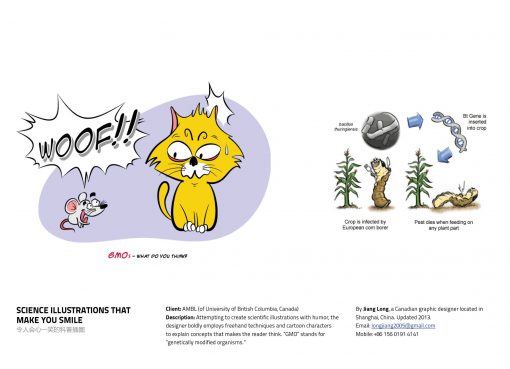Bhanita Talukdar
Research Scholar
Cotton University
Edible flowers have been used in culinary arts for flavour and garnish for hundreds of years. Most edible flowers are seasonal and some are sold in local markets. The most common way to consume edible flowers is in fresh but they can also be consumed dried, canned in sugar and preserved in distillates. Apart from being food supplement and delicacy, many of them are known to have diverse health benefits as per traditional knowledge. Most of these wild edible flowers are used by local people and tribes of the North East India. The active ingredients and potent phytochemicals with promising pharmacological properties of those plants are yet to be explored.
Here are the names of a few edible flowers that are eaten as delicacies in the region:
Moringaoleifera (Sojina)

Moringa oleifera is a middle sized soft tree and the flowers are small, whitish and honey-scented. Drum stick of the tree is eaten as curry. The flowers of Moringa olifera are processed in hot water to remove bitter principles and then cooked as an iron rich vegetable. Apart from the traditional medicinal and nutritional values, there are several reports on the biological and pharmacological properties of Moringa oleifera. These include its hypoglycaemic and hypocholesterolemic effects, anti-inflammatory, analgesic and antihelmintic effect, dyspepsia and in the management of heart diseases, and ulcers etc.
Phlogacanthus thyrsiformis (Bahekatita)

It is an evergreen shrub attaining a height of 4-8 feet. It is a seasonal in nature and tends to flower in the second half of November and first half of December. It is normally cultivated in household gardens. The flowers are cooked with or without drying with edible oil particularly the mustard oil. It has a characteristic bitter taste and it is believed to have curative effect for a number of stomach ailments, effective against cough, cold and asthma. It is believed that seasonal consumption of these flowers act as an antidote to pox and prevent many skin diseases.
Sesbania grandiflora (Bokphool)
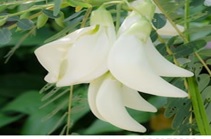
It is commonly known as Bokphul in Assamese which bears a big white flower that is heartily used in many traditional cuisines. It can be eaten alone as a vegetable or can be added to curries or salads. In many cuisines, it is eaten as fritters by dripping the flower in spiced gram flour batter and frying them. The flowers are rich in vitamins and minerals which are also reported to have anti-inflammatory, analgestic and antipyretic effects. Some portions of the flower are also associated with anticancer activity.
Nyctanthus arbor tristis (Sewali)
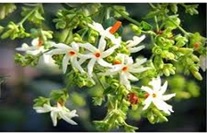
Another important edible flower is Nyctanthes arbor tristis, which is known as Sewali in Assamese. This is a small tree mostly planted in household courtyard. The plants normally flower in the fortnight of October. In traditional literature, it is considered as “Harbinger of autumn”. The flowers are small white with yellow orange coloured tubular sepal. The flower typically blooms in the night and by sunrise it falls off forming a carpet of flower around the tree. The flowers emit characteristic sweet smell and it is popularly called as ‘Queen of the night’. As per traditional food practices, the flowers are sun-dried and then cooked with edible oil. It is occasionally blended with egg during cooking. The flowers have a characteristic bitter taste and it is believed to be curative for a number of stomach ailments.
Curcuma angustifolia (Keturi):
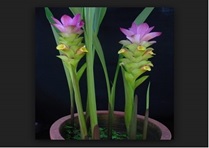
Another edible flower popular among different ethnic communities is Keturi phul (Curcuma angustifolia). Keturi is an annual herbaceous plant and it mostly grows in wild and occasionally grown in backyard garden. In Manipur, pakodas made using the flowers are considered a delicacy. Keturi is referred to as East Indian Arrowroot. It is highly nutritive, and is used as an agreeable, non-irritating diet in certain chronic diseases, during convalescence from fevers, in irritations of the alimentary canal, pulmonary organs and the urinary system. It may be given in the form of jelly, variously seasoned with sugar, lemon-juice, fruit jellies, essence or aromatics.
Oroxylum indicum (Karongkandai)

It is commonly known as karongkandai among the tribal people of north east India. Flowers of this plant are eaten as a delicacy with rice. The dishes are prepared with fermented or dried fish. Studies revealed that it possesses anticancer and immuno-modulatory properties. It is also a very rich source of antioxidants.
Justica adhota (Malabar nut):

The flowers of Justica Adhota are fried in mustard oil and are consumed along with other cuisines and rice. People also use the flowers to treat various ailments like cough, asthma, fever and stomach infections.
Brassica camperstris (Xorioh):
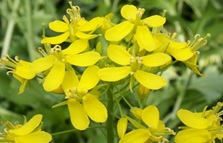
The flowers of mustard (Brassica camperstris) are dark yellowish in colour. In Northeast India, the flowers are eaten as delicacy where they are used to make a vegetable soup. The flowers are cleaned and boiled without any herbs, and the soup is consumed with meals. The soup is slightly bitter in taste and it is traditionally consumed by people for treating digestive issues.
Musa paradisiaca (Koldil) :
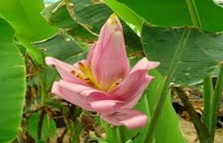
Banana inflorescence locally called as Koldil is available throughout the year. This is a popular delicacy and one of the important ethnic food culture identities of Assam. The flower of this plant has many medicinal properties. It helps in treatment of ulcers, dysentery and bronchitis. The consumption of these flowers also helps in reducing blood glucose level and increases total haemoglobin.
Melia azadirachta (Ghora neem):
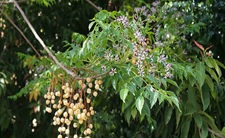
It is locally called as Ghora neem. The flowers are small, white tinged with purple blue. The flowers are bitter in taste. Traditionally, these flowers are consumed with pounded rice as a delicacy. The leaves of this plant are used for treating various skin infections and worms.
The consumption of wild edible flowers has high potential of enhancing food supply for the ethnic communities. Therefore, quality of these species should be assessed for their nutritional value so as to validate the scientific basis of consumption and bringing promising possibilities for providing food and nutritional security.



